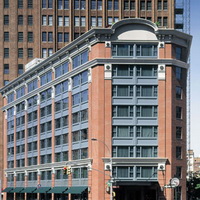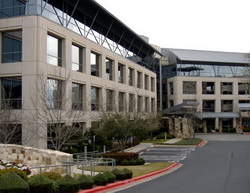GFRC cladding system, an efficient and versatile material

Glass fibre-reinforced concrete known as GFRC cladding system (GRC) is a composite material consisting of a Portland cement base with glass fibers that are randomly dispersed throughout the material. The fibres add to the tensile and impact strength, making possible the production of strong yet lightweight architectural panels.
The panel can be made much thinner than the conventional precast system thus resulting in a lightweight system. This system of panels can provide significant savings by minimizing structural framing and foundation costs for multi-storey construction especially in areas with poor supporting soil.Check Glass Fiber Reinforced Concrete Association and also Cement Composite Technology sites for details and related info.

Glass fiber reinforced concrete cladding can be produced in a variety of shapes, colours and textures such as smooth concrete, bricks, terra cotta, wood grain etc. it can also be used as an alternative to solid stone blocks.
Since glass fiber reinforced concrete cladding panels are usually produced and pre-fabricated in the factory the quality of the end product is easily controlled and assured. On a fast track project, the production of cladding panels can be scheduled ahead of the construction schedule due to its speed of fabrication which gives the contractor the luxury of faster cladding installation and early hand over.
One of the many advantages of GFRC cladding system construction is that it produces less waste than precast panels and uses fewer natural resources. Since the fabrication is done in the factory, less job site waste is produced. And at the end of the long economic life of a GRC clad building, the GRC panels may be refurbished for re-use or crushed for recycling.

Studies have shown a significantly reduced environmental impact with composite against precast concrete or other curtain wall and cladding options, therefore it can be qualified for "LEED" accreditation.
GFRC cladding system also has the advantage of being produced in complex shapes and forms, giving the architect the freedom of designing the façade in a post modern or classical fashion.



